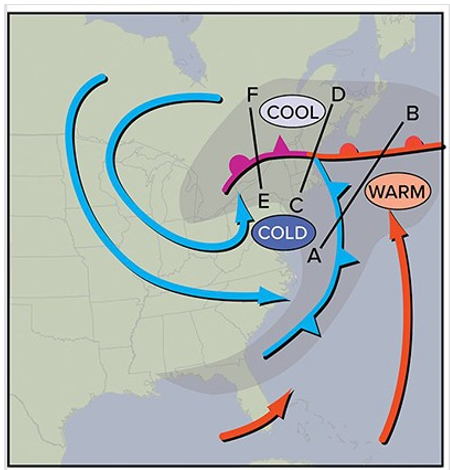Describe the main way that glaciers move. In which situations is this essentially the only type of flow a
glacier will undergo? What will be an ideal response?
Glaciers move mostly by plastic flow. When accumulating ice and snow reach a critical thickness of
about 40 m, the stress on the ice at depth is great enough to cause plastic flow, a type of permanent
deformation, involving no fracturing. If a glacier is solidly frozen to the ground, as in many polar
environments, it will move only by plastic flow.
You might also like to view...
In regard to the occlusion process, at which segment is warm air in contact with the surface?

A) F-E
B) D-C
C) B-A
Why are Genetic classifications so helpful?
A) They classify genetics of the material, studying the mineral makeup to group types. B) They group features or phenomena by noting similarities in the processes that create them. C) They group rock types by the appearance of the material. D) They study behaviors that processes exhibit.
Atmospheric pressure is the pressure exerted on an area from the weight of the atmosphere above it. Pressure is often measured in pounds per square inch (psi) and in units called millibars (mb). Normal air pressure at sea level is approximately 14
7 psi or 1013 mb. At the top of Mount Everest, the air is only 33% as dense as it is at sea level, and the air pressure is approximately 333 mb. Denver, Colorado, at an elevation of 5,280 feet, has an average air pressure of 834 mb. What would Denver's air pressure be in psi? A) 14.7 psi B) 17.9 psi C) 12.1 psi D) 8.34 psi
Andrew Carnegie's U.S. Steel Company produced ________ of U.S. steel output in 1900?
A) 5% B) 10% C) 20% D) 30% E) 50%